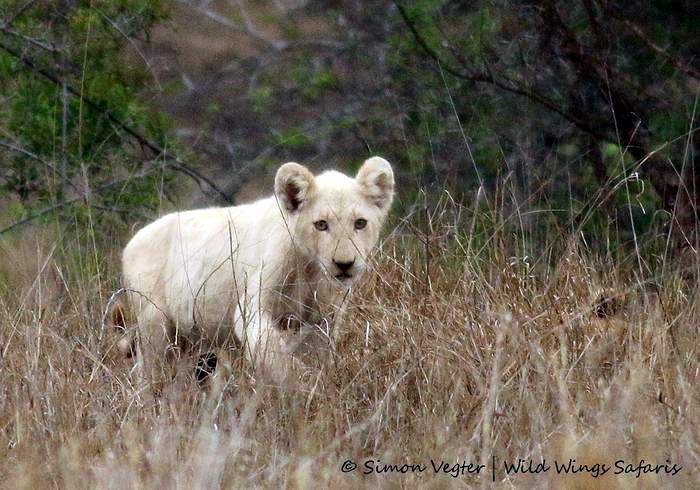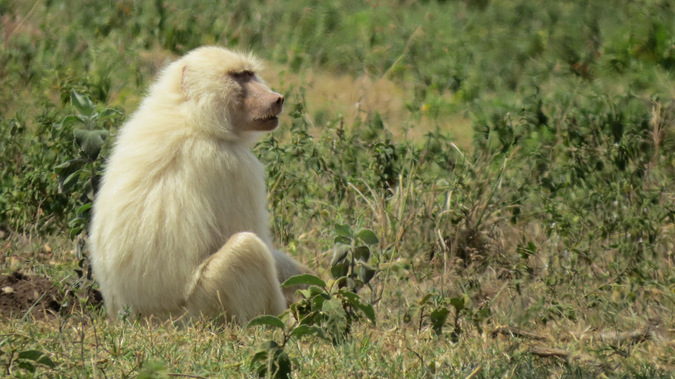
DECODING SCIENCE POST by AG Editorial
Every now and then nature experiments by producing a black or white mutation of an animal or bird that is otherwise normally coloured. There is something magical about seeing a white lion, black leopard or ‘king’ cheetah in the wild, as if it were a spiritual shadow of the species, a form of higher being.
Note that these white or black individuals are not a separate species or subspecies of the normally-coloured animal – they are purely a genetic anomaly. While the occurrence is very rare in the wild, and worth celebrating when seen, claims that ‘white lions’ (for example) are a rare species are incorrect and misleading.

When it comes to white lions (who are technically leucistic), the white lion gene lives on in the tawny lion population in the Timbavati area of the Greater Kruger National Park, and white individuals will probably keep popping up sporadically – for as long as the tawny lion population there remains stable. Attempts to breed white lions in captivity to ‘save the species’ are misguided and usually all about money – because white lions are popular as caged exhibits and hunting trophies.
The process of captive breeding of white lions by isolating the gene and producing more white lions than nature would usually produce leads to inbreeding and weak/genetically compromised individual animals that are not suitable for introduction into wild lion populations.


Let’s understand the phenomena at play here, in layman’s terms:
Albinism
Albinism (white) results in whitish-pink fur or feathers, and eyes with reddish pupils (the diagnostics trait). It is only passed on if both parents transfer it to their offspring.
Albinism is caused by a genetic mutation causing an absence of tyrosinase in pigment cells. Tyrosinase is a copper-containing enzyme that is needed to produce melanin, the pigment responsible for blacks, grays, browns, rusty browns, and pale yellows of feathers and body parts – and so albinos cannot produce any melanin at all and thus lack any colouration that is caused by the pigment. Eye colour is also produced by melanin, and so albinos have reddish/pink eyes because the blood vessels show through, not being masked by the darker melanin usually present in eyes. Albinism occurs in many species, including humans.

Leucism
Leucism (white) results in a partial or total loss of pigmentation – resulting in patches of white colouring in fur or feathers. Leucines, unlike albino animals, have normal-coloured eyes, and may or may not have normally coloured legs and beaks. Leucistic animals and birds do produce melanin (unlike albinos which produce no melanin), BUT the condition prevents melanin from being deposited in the fur or feathers.
So, melanin would be present in the skin, beak, legs, eyes and other body parts of a leucistic bird, for example. The white lions referred to above are also another example of leucism.

Melanism
Melanism (black) results in an excess of dark pigmentation. Melanism is found in many different species, including amphibians, reptiles, and mammals – but not in humans. Pseudo-melanism, also called abundism, is another variant of pigmentation, characterised by dark spots or enlarged stripes, which cover a large part of the body of the animal, making it appear melanistic. One example of abundism is the ‘king’ cheetah.
All three conditions above are hereditary but can skip generations. The condition can be passed on by generations that show no visual signs of the condition.

To comment on this story: Login (or sign up) to our app here - it's a troll-free safe place 🙂.![]()






